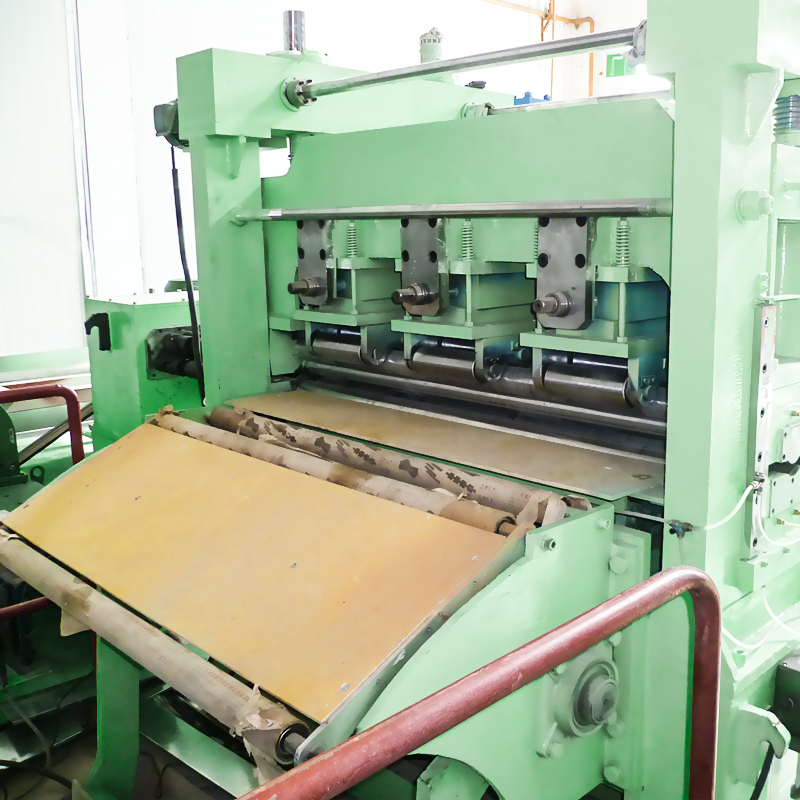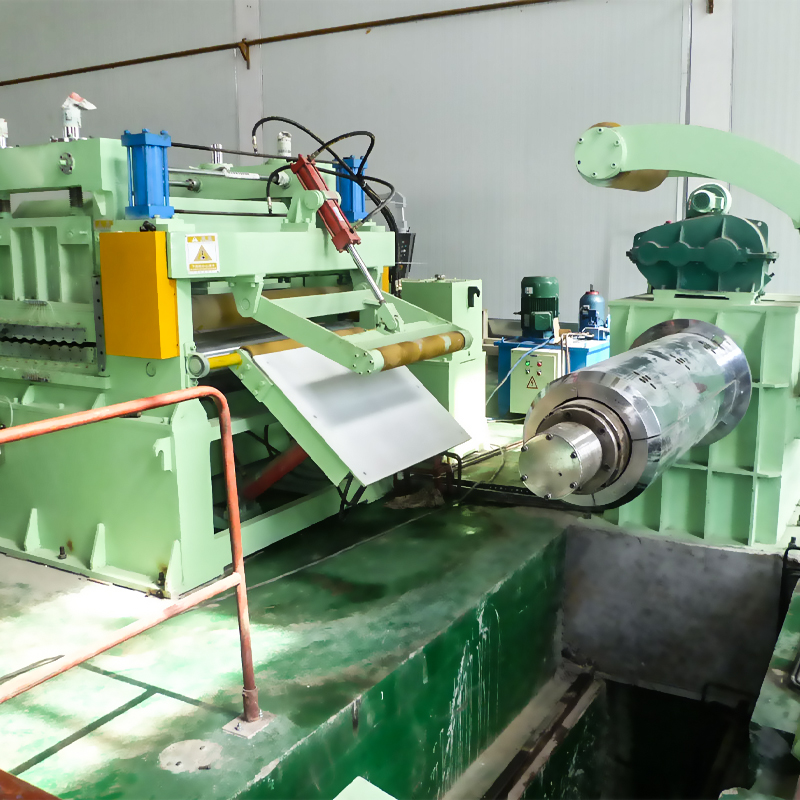Introducción
los tooling design in a roll forming machine is critical to producing high-quality metal profiles with precision and efficiency. Without proper tooling, manufacturers face issues like misalignment, excessive material waste, and inconsistent profile dimensions.
Entonces, ¿cómo design efficient roll forming tooling that ensures smooth production, minimal waste, and maximum accuracy?
En esta guía trataremos:
✅ Key principles of roll forming tooling design
✅ Factors affecting tooling performance
✅ Best practices for optimizing tooling lifespan
✅ Common tooling design issues and solutions
✅ How to choose the right tooling materials
Let’s explore the engineering behind roll forming tooling design and how to maximize efficiency and precision in 2025!
Key Principles of Roll Forming Tooling Design
Roll forming tooling consists of rodillos de precisión that gradually shape metal sheets into perfiles complejos. The design process involves several key principles para garantizar high-speed, defect-free production.
1. Proper Roller Pass Design
- Each roller station should gradually form the profile without excessive material stress.
- Progressive forming evita metal cracking and misalignment issues.
2. Material Flow Optimization
- The material should flow smoothly through the rollers without buckling or wrinkling.
- Adecuado edge control garantiza consistent profile width and thickness.
3. Minimized Tooling Wear & Friction Reduction
- Hardened steel rollers reduce wear and extend tooling lifespan.
- Lubrication systems prevent friction, reducing energy consumption and roller degradation.
4. Clearance & Tolerance Control
- Clearance between rollers must match metal thickness para evitar overforming or underforming.
- Fine-tuned tolerances garantizar consistent profile accuracy.
5. Stress Distribution & Compensation
- Uneven forming stress leads to profile distortion and edge cracking.
- Balanced stress distribution across the rollers ensures smooth forming.
Consejo profesional: Proper tooling design can improve roll forming accuracy by 30% and reduce material waste by 20%!
Factors Affecting Roll Forming Tooling Performance
Several factors influence the performance and longevity of roll forming tooling. Addressing these factors can optimize production and minimize downtime.
1. Tooling Material Selection
- High-speed steel (HSS) and carbide tooling last longer than standard steel.
- Chrome-coated or nitrided rollers reduce friction and extend lifespan.
2. Roller Alignment & Calibration
- Misaligned rollers cause profile distortion and excessive wear.
- Calibrado regular garantiza consistent profile accuracy.
3. Lubrication & Cooling Systems
- Lubricación adecuada reduces heat buildup and friction.
- Cooling systems prevenir thermal expansion of rollers.
4. Roll Forming Speed & Pressure Control
- High-speed forming without proper pressure control causes metal cracking.
- Adjusting forming speed ensures smooth material flow and uniform shaping.
5. Profile Complexity & Bending Angles
- Complex profiles require more roller passes to prevent excessive stress.
- Gradual bending angles reducir profile defects and splitting.
Consejo profesional: Using high-quality tooling materials can extend roller lifespan by up to 50%!
Best Practices for Optimizing Tooling Lifespan
Proper tooling maintenance prevents premature wear and ensures long-term efficiency. Follow these best practices to maximize tooling durability.
1. Use Hardened Tooling Materials
✅ Carbide-coated or nitrided steel rollers last longer than standard rollers.
✅ High-speed steel (HSS) tooling resists wear and maintains sharp edges.
2. Implement Preventive Maintenance
✅ Regularly inspect roller alignment and surface wear.
✅ Solicitar high-quality lubricants to reduce friction and overheating.
3. Optimize Forming Pressure & Speed
✅ Excessive pressure causes tooling wear and material cracking.
✅ Adjust forming speed based on material thickness and profile complexity.
4. Keep Tooling Clean & Debris-Free
✅ Dirt and debris increase friction and reduce forming accuracy.
✅ Regular cleaning prevents surface scratches and roller damage.
5. Store Tooling in a Controlled Environment
✅ Humidity and temperature fluctuations cause tooling corrosion.
✅ Store rollers in dry, climate-controlled conditions to prevent rust.
Consejo profesional: A well-maintained tooling system can last 3x longer than an unmaintained one!

Common Roll Forming Tooling Issues & Solutions
Incluso con proper design and maintenance, tooling issues can arise. The table below highlights common tooling problems and how to fix them.
| Edición | Causa | Solución |
|---|---|---|
| Distorsión del perfil | Misaligned rollers, excessive forming pressure | Recalibrate roller alignment, reduce pressure |
| Desgaste excesivo de los rodillos | Poor lubrication, low-quality tooling material | Apply proper lubricants, use hardened steel rollers |
| Material Cracking | Sharp bending angles, excessive forming speed | Reduce forming speed, increase number of passes |
| Surface Scratches on Profiles | Dirty rollers, high friction | Clean rollers regularly, apply lubrication |
| Uneven Profile Thickness | Incorrect roller clearance settings | Adjust roller spacing to match material thickness |
Consejo profesional: 80% of profile defects are due to misalignment—regular calibration ensures perfect forming!
Choosing the Right Tooling Material for Roll Forming Machines
los tooling material desempeña un papel crucial en roller lifespan, forming quality, and maintenance costs. Below is a comparison of commonly used tooling materials.
| Tooling Material | Durabilidad | Friction Resistance | Costo | Lo mejor para |
|---|---|---|---|---|
| High-Speed Steel (HSS) | ⭐⭐⭐⭐ | ⭐⭐⭐ | 💰💰💰 | General roll forming |
| Carbide-Coated Steel | ⭐⭐⭐⭐⭐ | ⭐⭐⭐⭐⭐ | 💰💰💰💰 | Heavy-duty, high-volume production |
| Chrome-Plated Rollers | ⭐⭐⭐ | ⭐⭐⭐⭐ | 💰💰 | Resistencia a la corrosión |
| Nitrided Acero | ⭐⭐⭐⭐ | ⭐⭐⭐ | 💰💰💰 | High-precision forming |
Consejo profesional: Carbide-coated rollers provide the best wear resistance and longest lifespan for high-volume production!
Advanced Techniques for Roll Forming Tooling Design Optimization
Optimizing roll forming tooling design requires precision engineering, advanced material selection, and cutting-edge technology integration. A continuación técnicas avanzadas que enhance tooling efficiency, durability, and accuracy.
1. Multi-Stage Roll Pass Design for Complex Profiles
- Gradual forming in multiple stages evita material cracking and stress concentration.
- Optimized roller geometry garantiza smooth material flow and even stress distribution.
- Reduce spring-back effect by controlling incremental bending angles.
2. CAD/CAM Simulation for Tooling Design Optimization
- Computer-aided design (CAD) helps to visualize the forming process before production.
- Finite Element Analysis (FEA) predicts material behavior, reducing trial-and-error adjustments.
- Garantiza perfect roller profiling and eliminates design flaws.
3. High-Precision CNC Machining for Tooling Fabrication
- CNC machining ensures consistent roller dimensions and tight tolerances.
- Reduce human error in manual tooling fabrication.
- Activa repeatability in mass production of roll forming dies and rollers.
Consejo profesional: Advanced CAD simulations reduce tooling setup time by 50% and improve forming accuracy!
How to Improve Tooling Durability & Reduce Wear
Desgaste de herramientas affects product quality, increases maintenance costs, and reduces production efficiency. He aquí cómo extend tooling life and reduce wear.
1. Surface Hardening Treatments
- Nitriding and chrome plating aumentar roller hardness and wear resistance.
- Rodillos recubiertos de carburo reducir friction and surface damage.
2. Proper Lubrication & Cooling Systems
- Automated lubrication systems prevenir heat buildup and roller wear.
- Coolant circulation maintains stable forming temperatures.
3. Regular Tooling Inspection & Maintenance
- Conduct routine inspections to detect early signs of wear and misalignment.
- Replace damaged rollers before they affect profile accuracy.
Consejo profesional: Using nitrided steel rollers can extend tooling lifespan by up to 40%!
How to Reduce Material Waste in Roll Forming Tooling
Aumentan los residuos materiales costes de producción y reduce la eficiencia. He aquí cómo minimize scrap rates and maximize yield.
1. Optimizar la separación y la alineación de los rodillos
- Improper roller alignment causes profile distortions and edge cracking.
- Ajustar roller clearance based on material thickness.
2. Use AI-Based Defect Detection
- AI-powered cameras monitor real-time profile accuracy.
- Detects forming defects earlyreduciendo el desperdicio de material.
3. Implement CNC Precision Cutting
- CNC-controlled cutting systems ensure accurate profile lengths.
- Reduce uso excesivo de material y producción de chatarra.
Consejo profesional: Optimizing tooling alignment can reduce material waste by up to 20%!

Choosing the Right Roll Forming Tooling Coating
los correct tooling coating enhances wear resistance, reduces friction, and improves forming precision. A continuación se ofrece una comparación de popular roll forming tooling coatings.
| Tipo de revestimiento | Resistencia al desgaste | Friction Reduction | Lo mejor para |
|---|---|---|---|
| Nitriding | ⭐⭐⭐⭐ | ⭐⭐⭐ | General roll forming |
| Chrome Plating | ⭐⭐⭐ | ⭐⭐⭐⭐ | Corrosion protection |
| Carbide Coating | ⭐⭐⭐⭐⭐ | ⭐⭐⭐⭐⭐ | Producción de gran volumen |
| Titanium Nitride (TiN) | ⭐⭐⭐⭐ | ⭐⭐⭐⭐ | Extreme wear resistance |
Consejo profesional: Carbide-coated tooling lasts 50% longer than standard steel rollers!
Common Design Mistakes in Roll Forming Tooling & How to Avoid Them
Even experienced manufacturers can make tooling design mistakes that lead to inefficiency and defects. He aquí cómo avoid them.
| Mistake | Problem Caused | Solución |
|---|---|---|
| Insufficient Roller Passes | Causes excessive material stress | Increase number of forming passes |
| Incorrect Roller Clearance | Leads to uneven thickness and misalignment | Adjust clearance based on material thickness |
| Sharp Bending Angles | Causes material cracking | Utilice ángulos de flexión graduales |
| Low-Quality Tooling Material | Aumenta wear and reduces lifespan | Utilice hardened steel or carbide coatings |
| Falta de lubricación | Produce excessive friction and roller damage | Instale automated lubrication systems |
Consejo profesional: Proper roller clearance settings can improve forming accuracy by 30%!
FAQ: Roll Forming Tooling Design & Optimization
1. What is the best material for roll forming tooling?
- Carbide-coated steel and nitrided steel offer the best durability and wear resistance.
2. How often should I replace roll forming tooling?
- It depends on material quality, production volume, and maintenance. High-quality tooling can last over 5 years with proper care.
3. What causes excessive roller wear in roll forming machines?
- Poor lubrication, high friction, and incorrect roller alignment contribute to premature wear.
4. How do I prevent material cracking in roll forming?
- Utilice ángulos de flexión graduales, optimize forming speedy reduce forming pressure.
5. Where can I buy high-quality roll forming tooling?
Para custom-built roll forming toolingVisite WUXI SUNWAY MACHINERY CO., LTD.
Reflexiones finales
los right tooling design es esencial para efficient, high-precision roll forming. By choosing high-quality materials, optimizing roller alignment, and implementing preventive maintenanceLos fabricantes pueden reduce downtime, increase accuracy, and extend tooling lifespan.
WUXI SUNWAY MACHINERY CO., LTD es un fabricante líder mundial de custom-built roll forming machines and tooling, ofreciendo tecnología avanzada, asistencia experta y precios competitivos.
¿Quieres un high-quality roll forming machine? Póngase en contacto con nosotros
